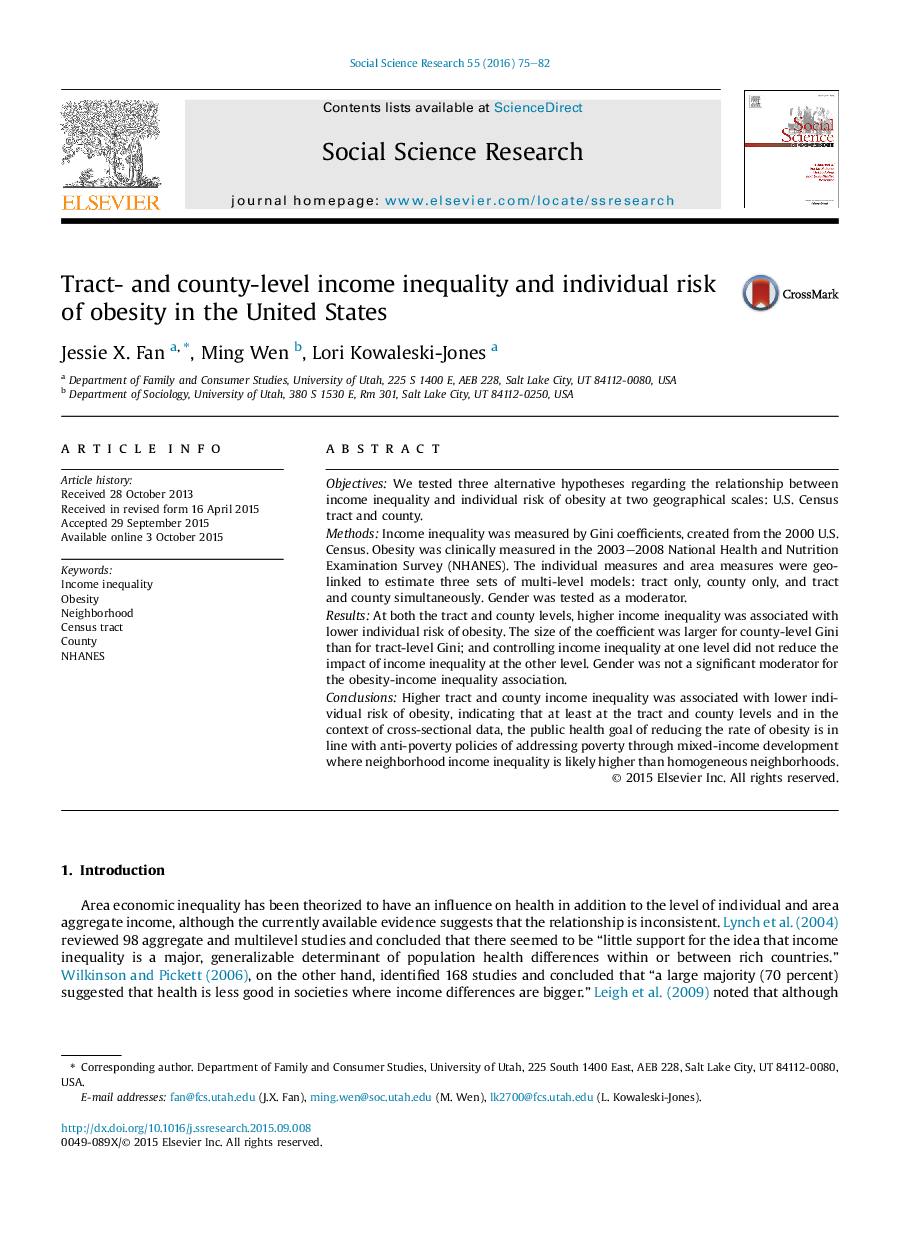| Article ID | Journal | Published Year | Pages | File Type |
|---|---|---|---|---|
| 955600 | Social Science Research | 2016 | 8 Pages |
•Higher tract- and county-level income inequality are independently associated with lower individual risk of obesity for residents.•The size of association between income inequality and obesity risk is larger for county-level than tract-level income inequality.•Gender is not a significant modifier of the income inequality and obesity risk relationship.
ObjectivesWe tested three alternative hypotheses regarding the relationship between income inequality and individual risk of obesity at two geographical scales: U.S. Census tract and county.MethodsIncome inequality was measured by Gini coefficients, created from the 2000 U.S. Census. Obesity was clinically measured in the 2003–2008 National Health and Nutrition Examination Survey (NHANES). The individual measures and area measures were geo-linked to estimate three sets of multi-level models: tract only, county only, and tract and county simultaneously. Gender was tested as a moderator.ResultsAt both the tract and county levels, higher income inequality was associated with lower individual risk of obesity. The size of the coefficient was larger for county-level Gini than for tract-level Gini; and controlling income inequality at one level did not reduce the impact of income inequality at the other level. Gender was not a significant moderator for the obesity-income inequality association.ConclusionsHigher tract and county income inequality was associated with lower individual risk of obesity, indicating that at least at the tract and county levels and in the context of cross-sectional data, the public health goal of reducing the rate of obesity is in line with anti-poverty policies of addressing poverty through mixed-income development where neighborhood income inequality is likely higher than homogeneous neighborhoods.
